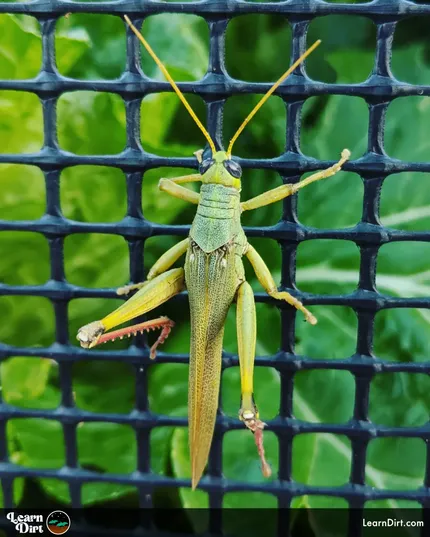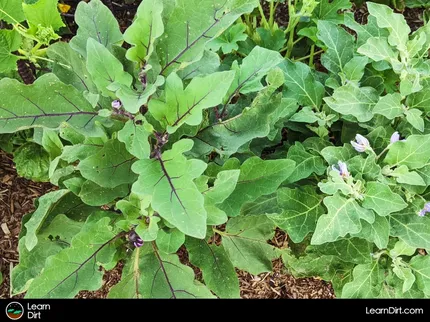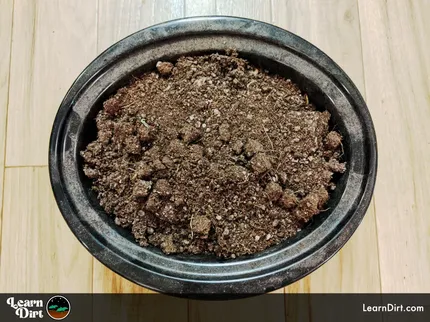Table of Contents
* Our articles never contain AI-generated slop *
Let's talk about some of the invasive plant species to be wary of in Arizona. If you're gardening or landscaping, be sure to avoid planting any of these.
Over the years, lots of non-native species have been introduced to the Sonoran Desert.
Some of these are fine, and some completely take over and irrevocably alter ecosystems forever. I'm looking at you, buffel grass!
Disclaimer: This post may contain affiliate links. Refer to the privacy policy for more information.
Thankfully now we've got more knowledge available online easily to find out which species are invasive in your area.
A quick Google search like yours can bring you a whole list of invasive for Arizona so you know to avoid these:
African Daisies

These are often sold in big box nurseries in AZ, and I've also heard reports of people finding African daisy seeds in the Pima County seed library box.
Unfortunately as beautiful as they may look, they're a pernicious invasive here in Tucson and spread far too easily. Your neighbors probably won't appreciate when they take over that whole neighborhood.
Alas, it's best to save African daisies for climates where they don't thrive quite so well.
To make matters worse here, many gardeners in Arizona are completely unaware of how invasive these species are. That's what makes African daisies more of a problem than they need to be.
Knowledge is our first line of defense against ecosystem imbalances - so spreading the word about the invasive nature of African Daisies in this climate is important!
I'd love to stop seeing these in community gardens, Pima County seed library boxes, and home gardens around town - but there's a lot of work to do to which begins with raising awareness of the problems this species causes.
Buffel Grass
Perhaps the worst invasive species we deal with here in Arizona.
Buffel grass is an African species that was introduced to Southern Arizona as a means of erosion control.
It completely took over.
Buffel grass fills in gaps between saguaros, prickly pear, mesquite trees, cholla, et al.
It then dries way back and is extremely susceptible to fire during the dry season. This creates a blanket of rapid-burning kindling across the desert floor.
In turn, the desert becomes affected by fires which spread in a way they never would before buffel grass took over.
Fountain Grass
Fountain grass is often sold as landscaping grass in Arizona. Many commercial properties and yards incorporate fountain grass into their landscapes without knowing that this grass is invasive in the Sonoran Desert.
Fountain grass, like buffel grass, brings fire to the low desert. Unlike grasslands, the lower desert elevations are not adapted to dealing with wildfire.
Join The Grower's Community
A free & open space for anyone who is passionate about cultivation 🌱
Check It Out!
Typically, the low desert in Southern Arizona does not have the tinder to spread fire between the saguaros, creosote, barrel cacti, and sporadic mesquite. Dried non-native buffel and fountain grasses change that by bridging the gap for fires, allowing them to spread.
Low desert plants are often slow-growing, like the mighty saguaro, and don't respond well to wildfires like some grasslands and forest do. Quite the opposite, these grasses out-compete native plants and make the low desert and absolute tinderbox after an abundant monsoon.
Trumpet Vine
These can be grown in Arizona, but you'll need to understand their aggressive growth rate, ability to climb trees and structures, and just how dang tough it can be to dig up the extensive root system if you want to get rid of them.
If they're kept trimmed back frequently and away from trees and buildings, you can successfully cultivate these in AZ.
If you don't plant to put that much work in keeping it cut back, though, trumpet vine might be more headache than it's worth. Understand what you're getting into if you decide to grow this somewhat-invasive species in Arizona!
That's all for now, thanks for reading!
If you have any questions, comments, or would like to connect with fellow gardeners, head on over to the forum and post there.




























